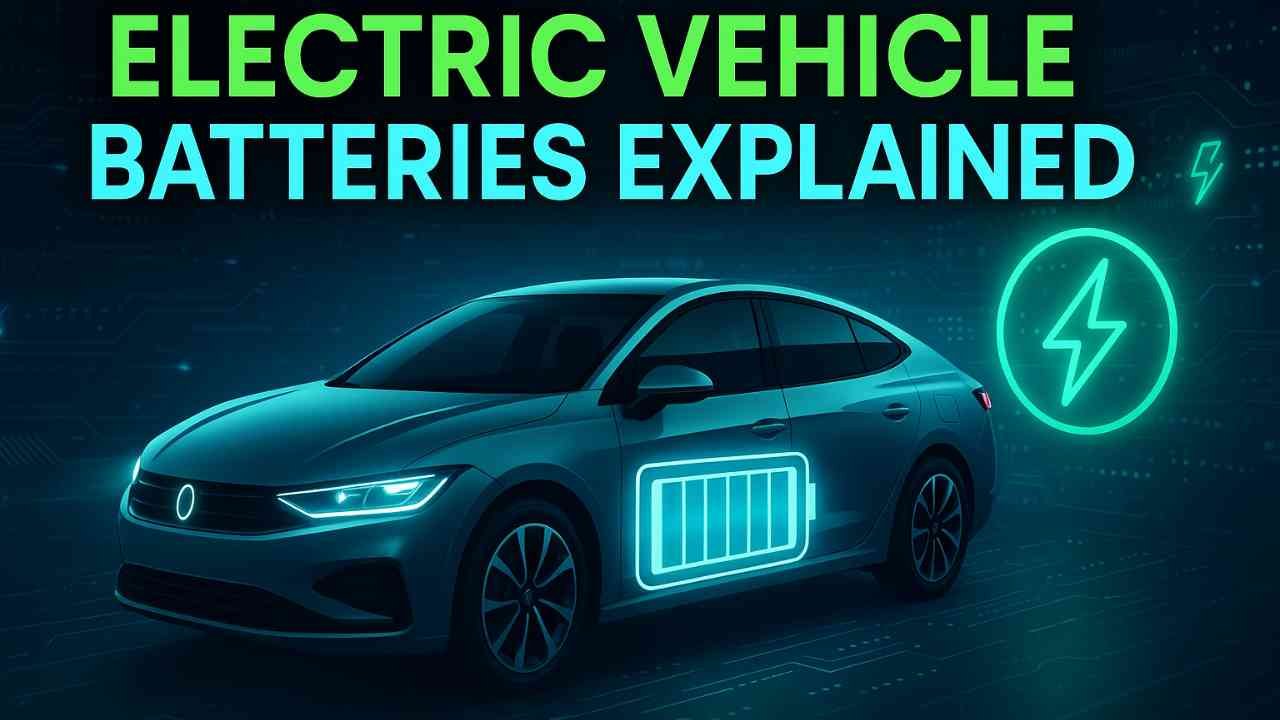Introduction
As electric vehicles (EVs) continue to grow in popularity, understanding the technology that powers them is becoming increasingly important. Central to any EV is its battery, which plays a crucial role in driving performance, range, and efficiency. In this article, we’ll break down how electric vehicle batteries work, the different types available, and how advancements in battery technology are shaping the future of transportation.
How Do Electric Vehicle Batteries Work?

Basic Functionality of EV Batteries:
At the core of an electric vehicle is its battery, which stores and releases energy to power the car’s electric motor. Unlike traditional internal combustion engines, EV batteries are rechargeable and are usually made from lithium-ion (Li-ion) cells, which are similar to the batteries found in smartphones, laptops, and other devices.
- Energy Storage and Release: The battery stores electrical energy and discharges it as needed to power the motor. When charging, the battery absorbs electricity, and when driving, it releases that energy to propel the vehicle.
- Regenerative Braking: Most EVs also feature regenerative braking, which converts kinetic energy back into electrical energy and stores it in the battery.
Types of Electric Vehicle Batteries
Lithium-Ion (Li-ion) Batteries:
The most common type of battery found in electric vehicles today is the lithium-ion battery. These batteries are known for their high energy density, long lifespan, and ability to recharge quickly.
- Advantages: High efficiency, longer life, and relatively lightweight.
- Drawbacks: Expensive and environmentally challenging to dispose of.
Solid-State Batteries (Future Technology):
Solid-state batteries are emerging as the next generation of EV power sources. Unlike lithium-ion batteries, which use liquid electrolytes, solid-state batteries use solid electrolytes, offering better energy density and safety features.
- Advantages: Higher efficiency, longer range, and safer (less risk of overheating).
- Drawbacks: Currently expensive and in the development phase.
Nickel-Metal Hydride (NiMH) Batteries:
NiMH batteries were once commonly used in earlier hybrid and electric vehicles, but they have been largely replaced by lithium-ion due to their lower energy density.
- Advantages: Lower cost than Li-ion batteries.
- Drawbacks: Larger and less efficient, with a shorter lifespan.
Battery Range: How Far Can Electric Cars Go?
Factors Affecting EV Range:
The range of an electric vehicle is one of the key factors potential buyers consider. The distance an EV can travel on a full charge depends on various factors:
- Battery Capacity: Larger capacity batteries typically offer longer ranges.
- Driving Conditions: Driving habits, terrain, and climate can all influence the range.
- Vehicle Efficiency: The motor’s efficiency, aerodynamics, and weight of the car all impact how far the car can travel.
Average Range in 2025:
Most modern EVs offer a range of 250–400 miles on a single charge, with high-end models offering over 500 miles.
Charging Electric Vehicle Batteries
How Long Does It Take to Charge an EV?
The time it takes to charge an EV depends on the type of charger and the battery size. There are several types of charging stations:
- Level 1 Charging: Uses a standard 120-volt household outlet. It can take 12–24 hours to fully charge an EV.
- Level 2 Charging: Uses a 240-volt outlet and typically takes 4–8 hours for a full charge.
- DC Fast Charging: The quickest option, offering 80% charge in 30 minutes. It’s found at public charging stations.
Battery Management Systems (BMS):
A critical part of EV battery charging is the Battery Management System (BMS), which monitors the battery’s health, state of charge, temperature, and ensures the battery is charged safely and efficiently.
How Long Do Electric Vehicle Batteries Last?
Lifespan of EV Batteries:
The lifespan of an electric vehicle battery depends on various factors such as driving conditions, charging habits, and the type of battery used. On average, an EV battery lasts around 8 to 15 years.
- Battery Degradation: Over time, EV batteries lose capacity, which can slightly reduce range. However, modern batteries are designed to degrade slowly, and most manufacturers offer warranties that cover battery degradation for 8 years or longer.
- Extending Battery Life: Proper maintenance, such as avoiding frequent rapid charging and maintaining moderate battery charge levels, can help prolong battery life.
Environmental Impact and Recycling of EV Batteries
Recycling and Disposal:
EV batteries contain valuable materials such as lithium, cobalt, and nickel, which can be recycled. However, improper disposal of these batteries can lead to environmental damage due to the toxic chemicals they contain.
- Battery Recycling Programs: Many manufacturers are working on creating effective recycling programs to ensure the safe disposal and reuse of materials.
- Environmental Impact: While EV batteries contribute to cleaner air by reducing emissions, the mining and production of battery materials can have environmental impacts, which makes recycling and sustainable production practices crucial.
The Future of Electric Vehicle Batteries
Advancements in Battery Technology:
The future of EV batteries looks promising with ongoing advancements in technology. We can expect improvements in energy density, charging speed, and safety. The development of solid-state batteries and the use of recycled materials will likely reduce costs and make EVs even more efficient and accessible.
- Battery Swapping: Some companies are exploring battery swapping stations, where drivers can exchange depleted batteries for fully charged ones, reducing waiting times.
Conclusion
Electric vehicle batteries are the cornerstone of the green transportation revolution. As technology advances, these batteries will become more efficient, affordable, and environmentally friendly. By understanding how EV batteries work, their types, charging methods, and lifespan, consumers can make informed decisions about switching to electric vehicles and embracing the future of automotive technology.
